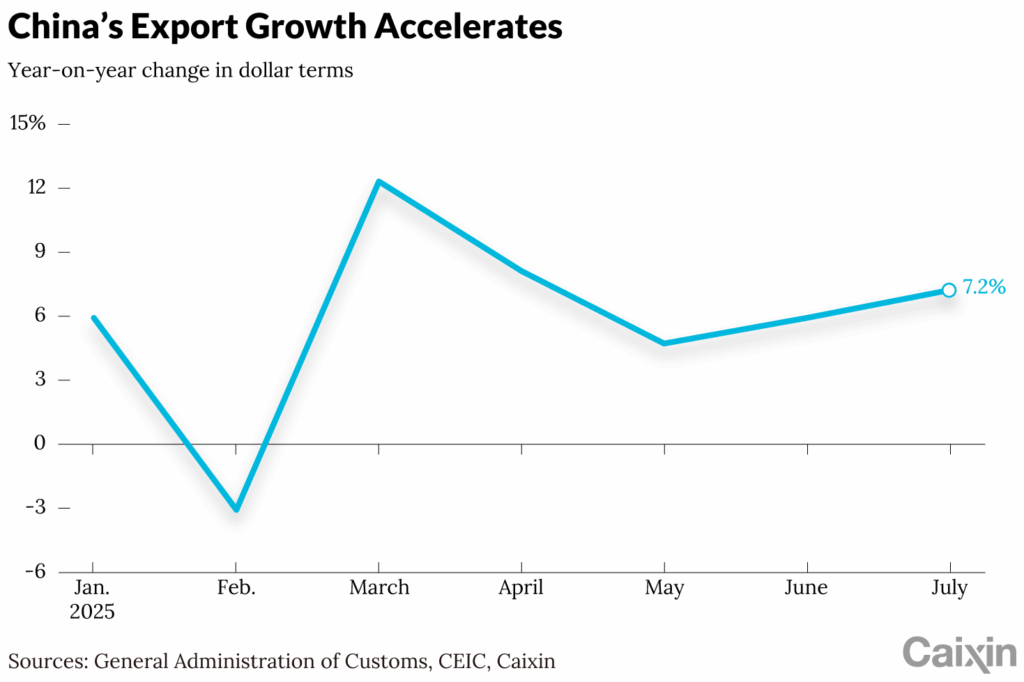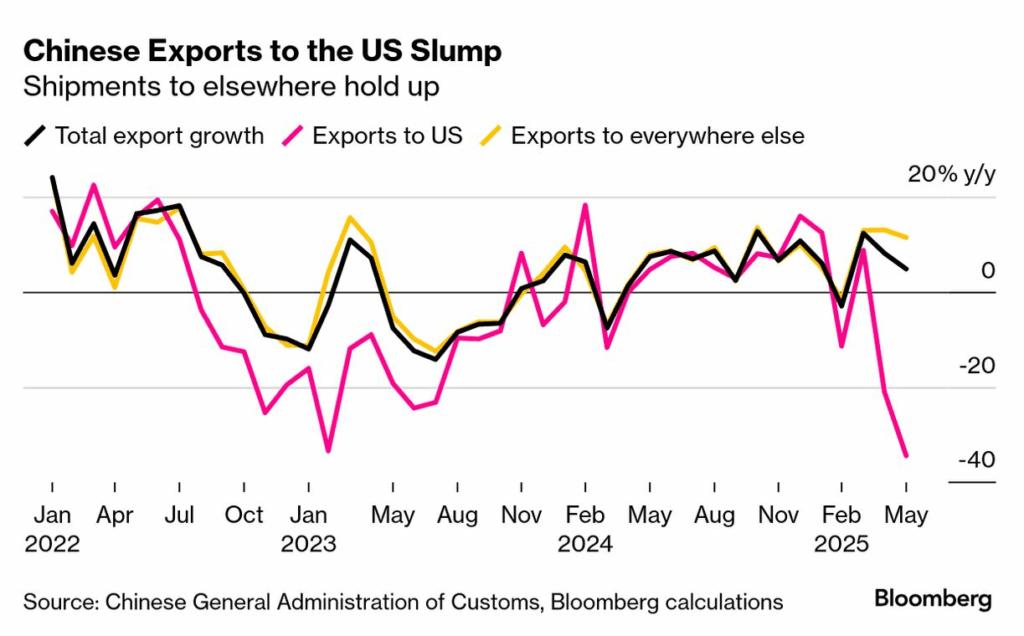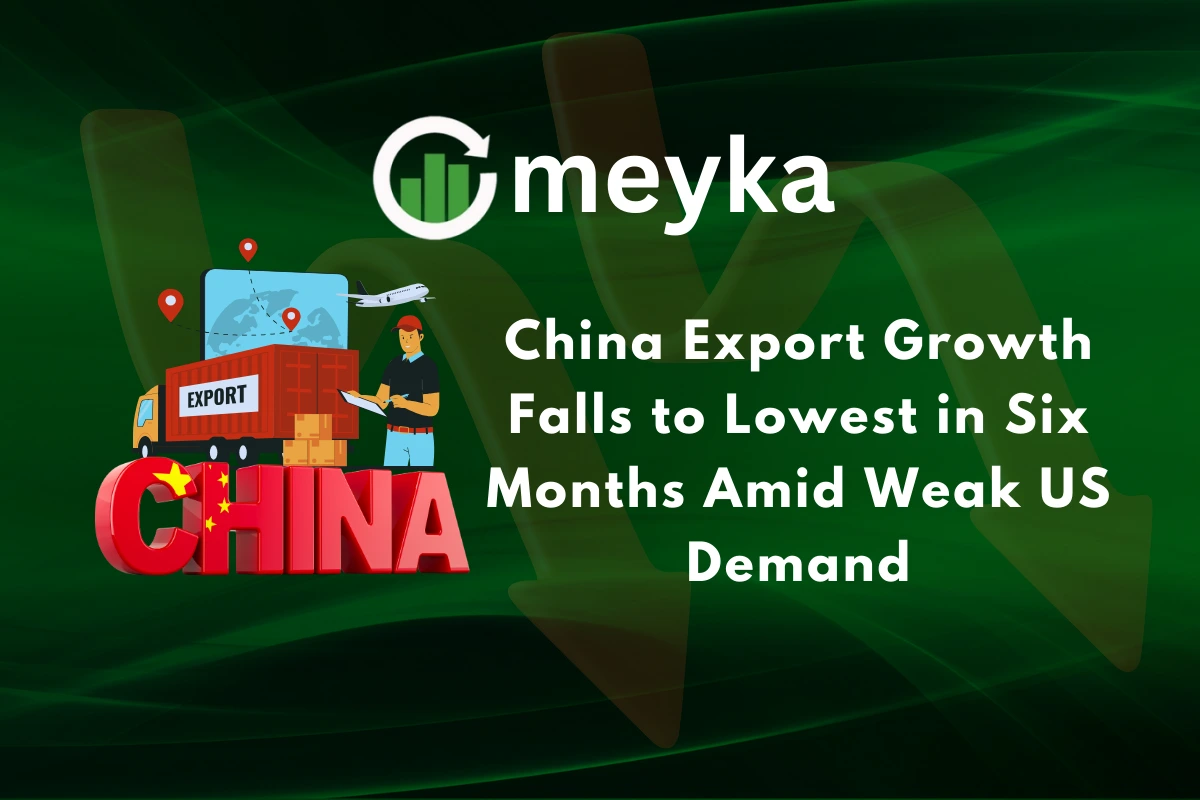China Export Growth Falls to Lowest in Six Months Amid Weak US Demand
China’s exports have dropped and reached their lowest growth in six months. Recent data shows that shipments to big markets, especially the United States, are falling. Global trade is already facing problems, and this slowdown adds more pressure. Demand from U.S. buyers has cooled, which hurts Chinese factories that rely on selling goods abroad.
This drop is more than just a number. It shows wider problems in the world economy. Rising interest rates, inflation, and changes in what people buy all play a part. Sectors like electronics, machines, and clothes are facing the biggest hits. These changes matter to businesses and investors everywhere. They may cause delays in supply chains, higher prices, and new market challenges.
Let’s look at why China’s export growth is slowing. We will see how weak demand from the U.S. affects trade. Finally, we will discuss what this means for the world economy.
Overview of China’s Export Performance
In August 2025, China’s export growth decelerated to its slowest pace in six months, rising by just 4.4% year-on-year, down from 7.2% in July. This slowdown was primarily attributed to a significant 33% drop in shipments to the United States. And also marks the fifth consecutive month of double-digit declines in U.S.-bound exports.

Despite this downturn, exports to other regions, such as Southeast Asia and the European Union, experienced growth, increasing by 22.5% and 10% respectively. This shift indicates a redirection of trade flows as Chinese exporters seek alternative markets amid ongoing trade tensions with the U.S.
Impact of Weak U.S. Demand
The 33% decline in exports to the U.S. underscores the profound impact of trade tensions and tariffs on China’s export sector. The United States, a significant consumer of Chinese goods, has imposed tariffs on various Chinese products, leading to reduced demand.

This situation has been exacerbated by the expiration of temporary tariff truce measures, which had previously provided a short-term boost to trade. The ongoing trade disputes and the imposition of high tariffs have made Chinese goods less competitive in the U.S. market, compelling exporters to explore alternative markets to mitigate losses.
Global Trade Implications
The slowdown in China’s exports has ripple effects across the global trade landscape. As the world’s largest exporter, China’s economic health is closely tied to global supply chains. The decline in Chinese exports, particularly to major markets like the U.S., can lead to disruptions in these supply chains, affecting industries worldwide.
Furthermore, the shift in trade routes and the search for new markets can alter global trade dynamics, potentially leading to increased competition in previously less contested markets. These changes can have significant implications for global trade policies and economic strategies.
China’s Economic Strategy Amid Slowing Exports
In response to the deceleration in export growth, China is implementing various strategies to bolster its economy. The government is focusing on stimulating domestic consumption to offset the decline in external demand. Measures include promoting consumer spending and investing in infrastructure projects to spur economic activity.
Additionally, China is seeking to diversify its export markets to reduce dependency on the U.S. market. Efforts are being made to strengthen trade relations with regions such as Southeast Asia and the European Union. They aim to open new avenues for Chinese goods.
Analyst Insights and Forecasts
Analysts are closely monitoring China’s export sector, with many projecting a continued slowdown in the near term. The persistent trade tensions with the U.S., coupled with the expiration of temporary tariff truce measures, are expected to keep pressure on China’s export growth.
However, some experts believe that China’s efforts to diversify its export markets and stimulate domestic consumption could mitigate the impact of these challenges. The effectiveness of these strategies will be crucial in determining the trajectory of China’s export sector in the coming months.
Botom Line
The recent slowdown in China’s export growth highlights the challenges faced by the country amid ongoing trade tensions and shifting global demand. While the decline in exports to the U.S. is a significant concern, China’s efforts to diversify its markets and stimulate domestic consumption may provide avenues for recovery. The global trade community will be closely watching China’s economic strategies and their effectiveness in navigating these turbulent times.
Frequently Asked Questions (FAQs)
China’s export growth has slowed mainly due to weak demand from the United States, ongoing trade tensions, and global economic uncertainties. Key sectors like electronics and machinery have been particularly affected.
China is boosting domestic consumption, investing in infrastructure, and diversifying its export markets to regions like Southeast Asia and the EU to reduce reliance on the U.S. market.
Disclaimer:
The above information is based on current market data, which is subject to change, and does not constitute financial advice. Always do your research.






